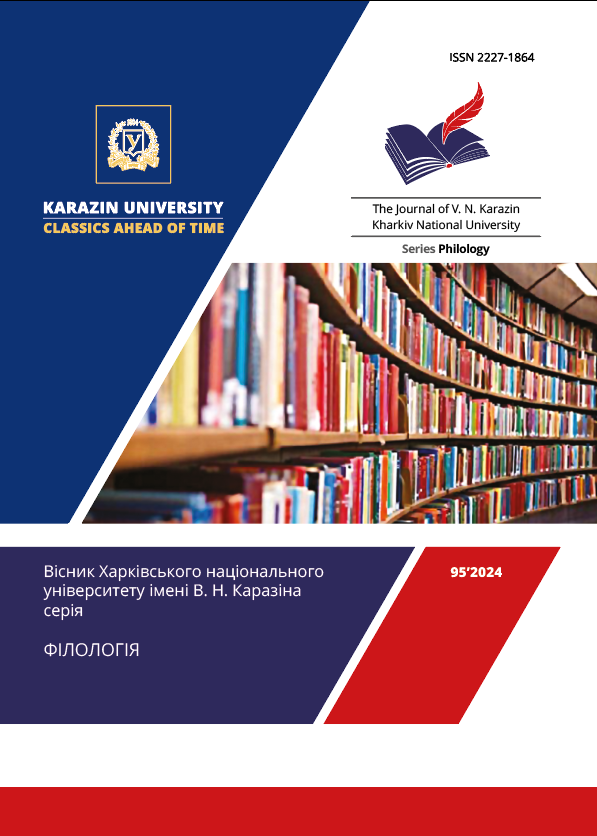Ukrainian Social Elite in Pylyp Orlyk’s Lliterary Works
Abstract
The principal focus of the article is the determination of the circle of Ukrainian elite representatives and the examination of the means of their image features, that are used by the prominent Ukrainian hetman in exile as well as baroque literator Pylyp Orlyk. His poetry collections "Ruthenian Alcide" and "Sarmatian Hippomenes", in addition to several insignificant eulogies, which were published in the course of the "Mazepian era", united the military, religious and cultural elites around the hetman. Poltava tragedy, which was fatal for Ukraine and personally for Pylyp Orlyk, divided Ukrainian elites into exiled ones and Russian supporters. His life-driving perspective about the current circumstances is described in his letters aimed at Ukrainian elites in Russia and Western Europe. Orlyk`s "Blank diariush" was journaled within the period from 1720 to 1733 and reflects the fluctuations of the author`s mood, the circle of people, that is entrusted with the mission of state foundation by Pylyp Orlyk, along with genre and artistic preferences of his creations.
The main objective of this work is to research the means of creating the image of Ukrainian elites, who lived within the period of Pylyp Orlyk`s activity in the context of his social, political, and aesthetic preferences, and is provided by the combination of intertextual, phenomenological, culturally-historical, and descriptively-analytical methods. On the foundation of the executed analysis, the summary stands thus: the research of the phenomenon of Ukrainian elites within the period from the 17th century to the 18th century took place, the circle of people, representing the Ukrainian elite of that period, who became the object of literary interest from Pylyp Orlyk (they are Ivan Mazepa, Ivan Obydovskyi, Stephan Yavorskyi and Danylo Apostol) took place, and the pattern of usage of various artistic means of various baroque registers, which are beneficial for creating the necessary images, was researched.
The one thing that can be safely assumed is that in his literary works, Orlyk depicts the image of Ivan Mazepa, Ivan Obydovskyi, Stephan Yavornytskyi, and Danylo Apostol, who were the brightest representatives of the Ukrainian elite of that period. There was an examination of distinct features of the application of literary means of various stylistic registers, that were the basis of the majority of literary images in Orlyk`s work.
Downloads
References
Brogi Bercoff, G. (2011). Sacred and secular bridal eloquence at the court of Ivan Mazepa // Pylyp Orlyk: his life, policies and texts: materials from International Scientific Conference "Ad fontes" in the name of 300 years from the day of adoption of Bendery Constitution in 1710, Kyiv, National University of Kyiv-Mohyla Academy, 14-16 th. of October 2010, Kyiv: Pulsary, 2011, 80-102. [in Ukrainian]
Kostruba, T. (1993). Hetman Danylo Apostol // Chronicle of the Red Viburnum, Lviv, 1993. Part. 10-12 (28-30). 48-53. [in Ukrainian]
Kremin, T. (2011). Poetical epic poem by Pylyp Orlyk: Life is like a paragon // Research papers from Chornomorsk Petro Mohyla State University. S. Philology and Literary Studies, 2011. E. 158, V. 170, 32-36. [in Ukrainian]
Novyk, O. (2024). Mars field, Christ`s army: the mundanity of the image of war in the context of baroque poetry // Siverian Chronicle. 2024. Nо. 4. 138-147. [in Ukrainian]
Orlyk, P. (2006). The Constituation, manifests and literary legacy: Selctd works. Kyiv: MAUP, 2006. 736 р. [in Ukrainian]
Pylyp Orlyk and Mazepians. Testimonials. Formatted by T. Tairova-Yakovleva. Kyiv : Klio, 2022. 216 р. [in Ukrainian]
Slipushko, O. (2024). For the glory of the great Ukrainian: Pylyp Orlyk (1672-1742) and his Diariush // Literary studies, linguistics, and folkloristics. 2024. Nо 2 (36). 117-118. [in Ukrainian]
The preciousness of the word. B. Nо. 2, Kyiv: Akonit, 2006. 800 р. [in Ukrainian]
Sobol, V. (2009). Pylyp. Orlyk`s "Diariush" as the diary of Ukrainian-Polish bordering // Word and time. 2009. Nо. 6. 20-26. [in Ukrainian]
Trofymuk, M., Trofymuk, O. (2022). Ukrainian constitutional tradition in the course of the early-modernist era. URL: https://zbruc.eu/node/111403 (date of application: 12.11.2024). [in Ukrainian]
Trofymuk, O. (2010). Literary legacy of Hetman Pypyl Orlyk // Word and time, 2010. Nо. 10. 42-48. [in Ukrainian]
Shevchuk, V. (2005). Pylyp Orlyk as a writer // Roxelanian muse: Ukrainian literature within the period from the 16th ventury to th 18th century (in 2 books). Т. 2: Developed Baroque. Kyiv: Lybid, 2005. 728 р. [in Ukrainian]




